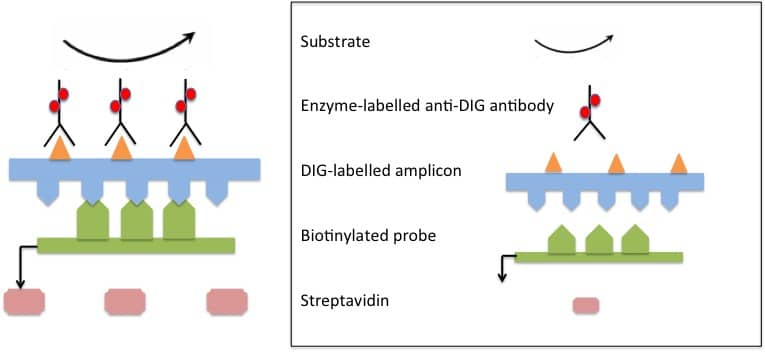The Gram stain is another commonly used special stain in the histology lab.
Why use a Gram stain?
The Gram stain is a type of differential staining technique which represents an important initial step in the characterization and classification of bacteria using a light microscope. It is named after a Danish scientist, Hans Christian Gram, who developed the method in 1884 to distinguish between two types of bacteria that were causing similar symptoms.
The Difficulty of Bacteria
Bacteria are the most difficult organisms to detect in H&E-stained sections of tissue. However, when certain histologic changes are suggestive of a bacterial infection- such as a consistent pattern of inflammation- a Gram stained section of the tissue can then be helpful to determine if bacteria are indeed present.
The stain classifies organisms as either:
- Gram-positive (e.g., Staphylococcus spp., Streptococcus spp.)
- Gram-negative (e.g., Escherichia coli, Salmonella spp.)
The Bacterial Cell Wall
Although Gram-positive and Gram-negative bacteria have similar internal structures, they differ with respect to the composition of their cell wall, which tends to be more structurally and chemically complex in Gram-negative bacteria.
A couple of major differences in the cell wall:
- Peptidoglycan: A mesh-like layer of sugars and amino acids
- Present in both Gram-positive and Gram-negative bacteria
- Thicker in Gram-positive bacteria
- Lipopolysaccharide: A lipid-polysaccharide layer external to the peptidoglycan
- Present only in Gram-negative bacteria
General Principles of the Stain
The procedure involves four basic steps:
- Initial staining with crystal violet. This is a basic dye which similarly stains both Gram-positive and Gram-negative organisms.
- Treatment with an iodine and potassium iodide solution (mordant) which serves to fix the crystal violet stain. Both Gram-positive and Gram-negative organisms remain purple after this step.
- Decolorization with a mixture of alcohol and acetone. This is the differential step: Gram-negative bacteria become destained, while Gram-positive bacteria retain the color of the crystal violet-iodine complex.
- Counterstaining with fuchsin (red) or safranin (pink). Since the Gram-positive bacteria are already stained purple, they are not affected by the counterstain. However, the now colorless Gram-negative bacteria do become stained.
How the Bacterial Cell Wall Influences the Technique
The difference in staining between Gram-positive and Gram-negative bacteria is based on their ability to retain the color of the violet stain used during the reaction.
The lipopolysaccharide layer of Gram-negative bacteria holds the key to this- it is disrupted in the decolorization step, allowing the original crystal violet stain to leach out, and the basic fuchsin or safranin counterstain to be taken up.
The thicker peptidoglycan layer of Gram-positive bacteria, on the other hand, allows the crystal violet stain to be retained.
| Bacteria | Colour in Gram-stained sections |
| Gram-positive | Blue-black |
| Gram-negative | Red-pink |
How frequently do you use a Gram stain in your lab?
Originally published on December 11, 2012. Updated and revised on September 7, 2015.






